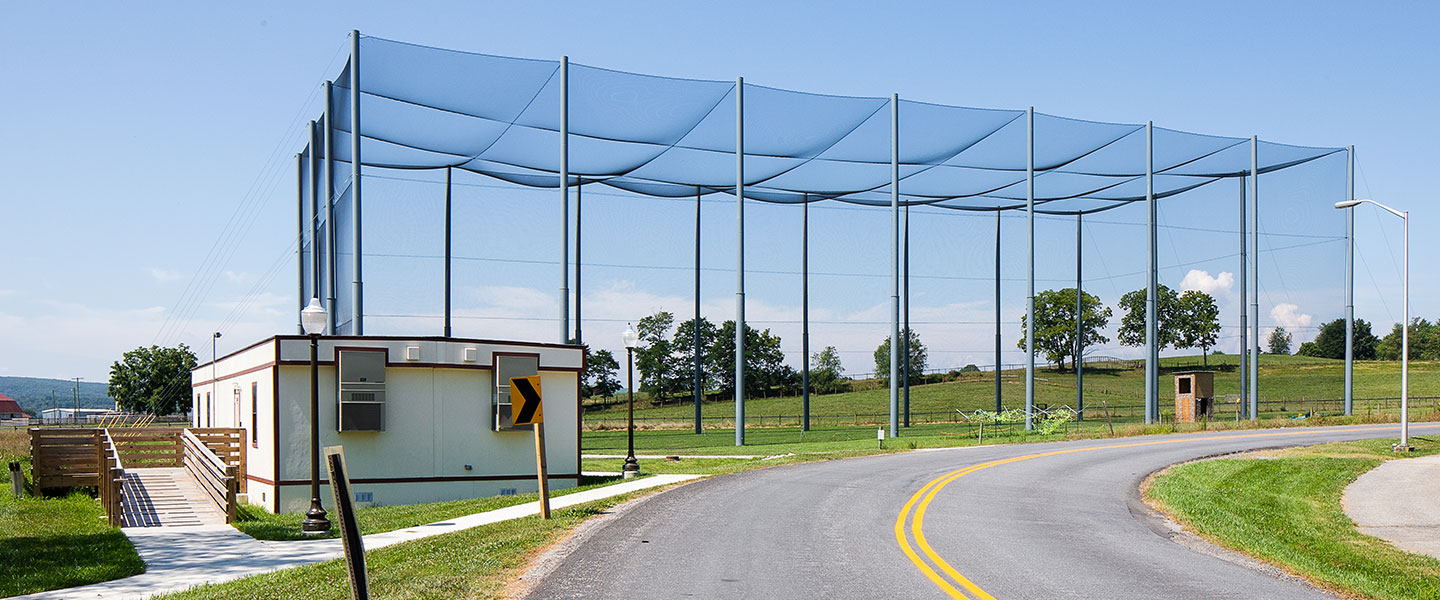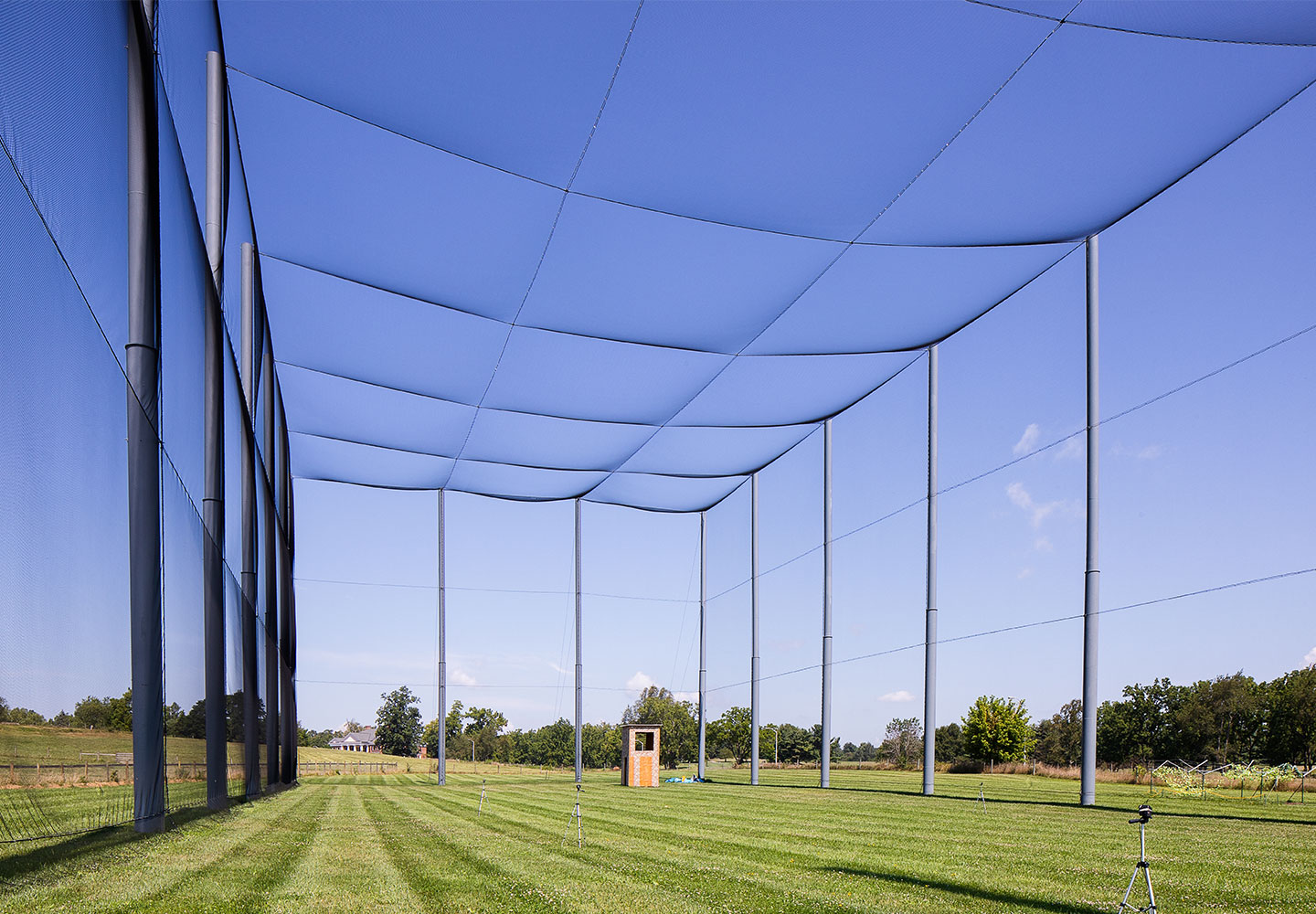Our world looks to technology as a catalyst for future possibilities, but these possibilities can’t be realized unless they are put into practice. To that point, Virginia Polytechnic Institute and State University (Virginia Tech), located in Blacksburg,
Virginia, wants to foster an environment for technology research and learning that puts a strong focus on student safety. To bring this vision to life, Virginia Tech wanted to create a netted-in, unmanned aerial vehicle (UAV) drone park to support
testing of drones and conducting research safely on campus. We were brought in as part of a multi-disciplined contract to design the UAV park and create a site plan to support an accompanying mobile classroom.
Our final design included site plan improvements, construction specifications, and ADA accessibility to the UAV park. We also included slight modifications of the existing parking lot to allow ADA accessibility for parking, ramps, and sidewalks for the
mobile research classroom. Following our design, the project’s contractor installed 80-foot support poles, netting, and brought in the mobile classroom unit, which needed to by synced with telecommunications, electric, water, and sanitary sewer.

Navigating Project Challenges
Our team needed to account for several moving pieces of the project that covered various engineering disciplines. In addition to accounting for all structural components, there was a large electrical duct bank that extended through the middle of the site
that we had to make sure was not impacted by the foundations of the mobile research facility. Another significant challenge was designing the project in a space adjacent to a hundred-year floodplain for a nearby creek. Construction in the floodplain
would have required additional permitting and potentially exposed the final mobile classroom and UAV park to unnecessary negative impacts from significant rain events.
One rather unique aspect of this project was that portions of Virginia Tech’s campus sits on karst rock, which is formed from the dissolution of soluble rocks, such as limestone, dolomite, and gypsum. When building on this topography, we needed
to be mindful of the threat of fractures and voids when drilling down to the bedrock. To prepare for these potential setbacks, we developed a flexible design that would allow for field adjustment if any fracture or void was encountered during construction.
While our team didn’t encounter any issues, we were well prepared.
Planning for Tomorrow’s Takeoff
The project was initially conceived as one of the many features of Virginia Tech’s growing technology corridor on campus. To accommodate this growth, our team needed to plan for future improvements and expansion in the vicinity. Our team was tasked
with bringing potable water from 500 feet away from the project site. Similarly, we were tasked with setting up electrical access for the possibility of a second mobile research facility.
A ‘Buzz’ Heard Beyond Campus
There’s a lot of buzz going around about this project – and I’m not talking about the buzz of the drones. Since completing the project, I’ve talked to some of our professionals in other regions around the country and there seems
to be some interest in projects like these as both a research and teaching tool for their campuses. Who knows, our project, and ones like it, may also help train the next generation of engineering surveying drone pilots! I know Dewberry will be there
waiting for them.
